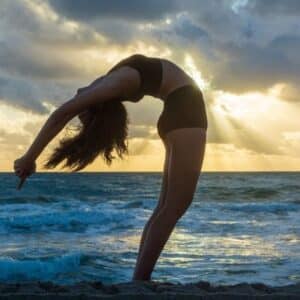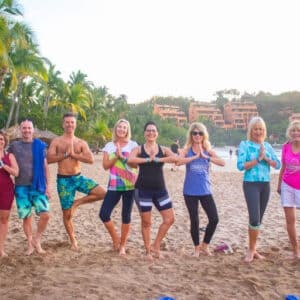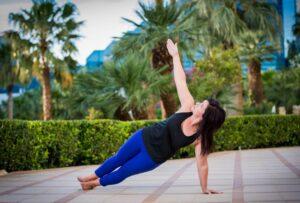Christina Charlotte
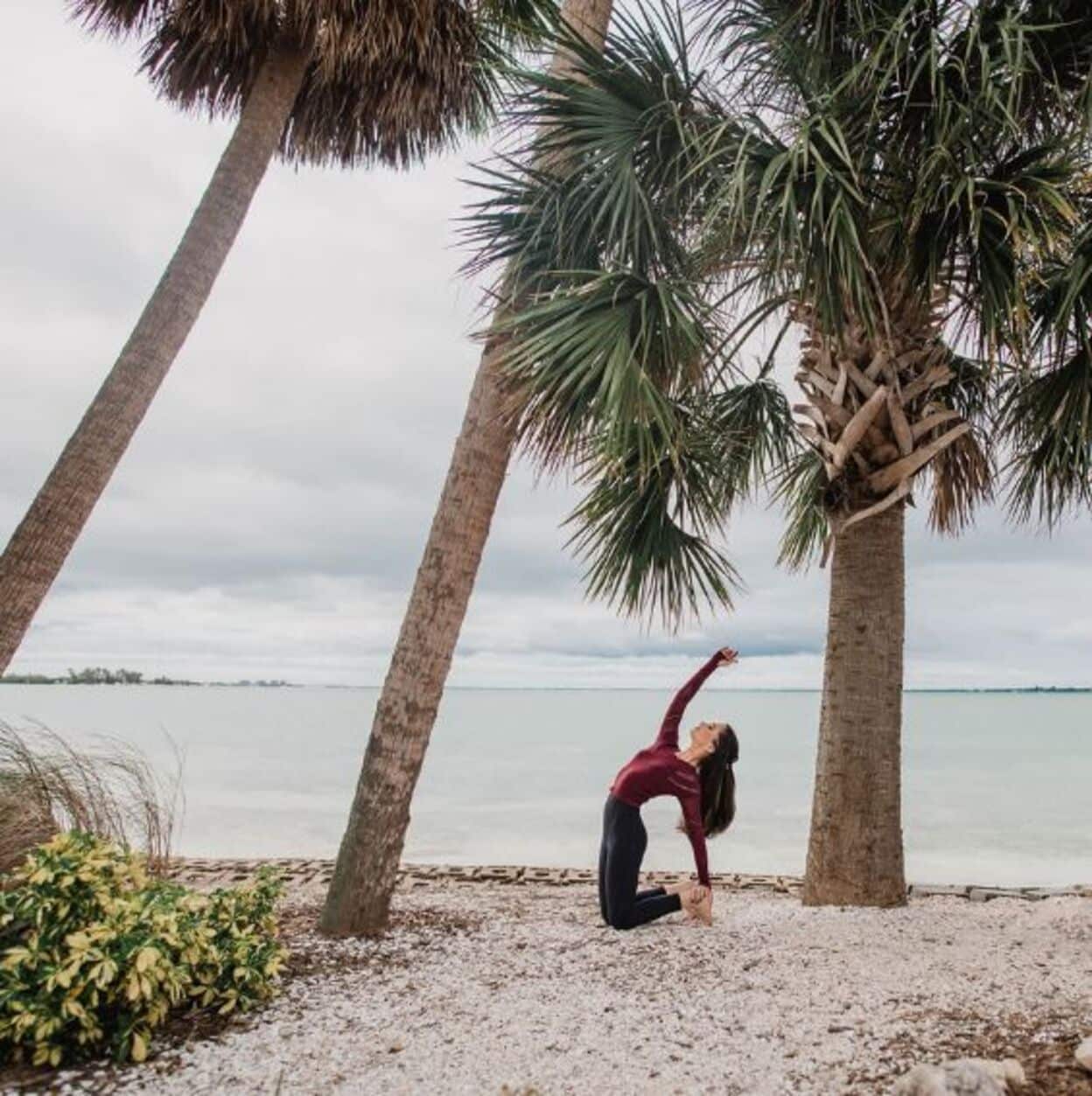
Long-Form Wellness Interview Series with Yoga Instructor Christina Charlotte
Actionable insights and practical advice for your life, health, and business.
In this interview:
- Skincare, Sound Healing, Yoga Journey
- Styles of Yoga: Yin, Hatha, Buti
- Creating Your Class Structure, Focus Areas, Peak Pose
- Feng Shui, Design Basics, Energy Flow
- Curiosity, Beginner's Mindset, Importance of Home Practice
- Entrepreneurship: The "Risky" Path?
- The Power of Goal Setting, Journaling & Free writing
Christina received her RYT-200 certification from Yoga Alliance and has been teaching for more than 8 years at a variety of studios, gyms, country clubs, and senior living facilities in the greater Sarasota, FL area. Her philosophy is that yoga should be accessible for students at every level and season of life. She attended the Institute for Integrative Nutrition and is a Certified Health Coach and licensed aesthetician. Her favorite styles of yoga include Yin, Hatha, and Restorative.
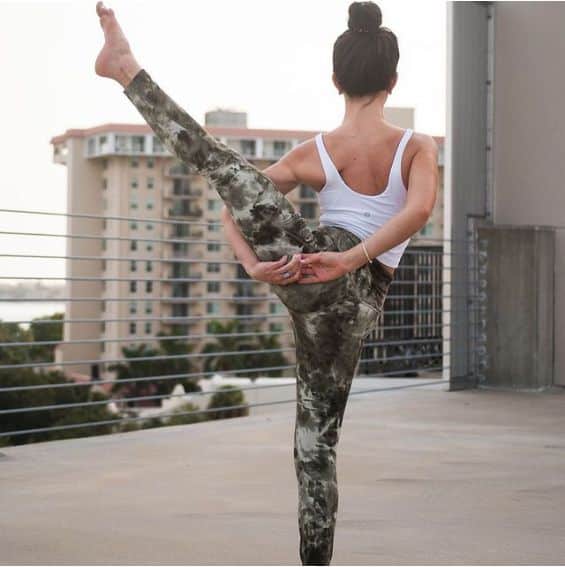
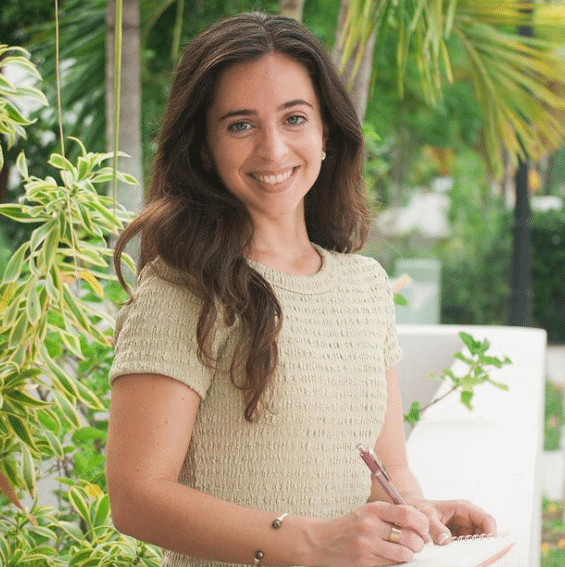
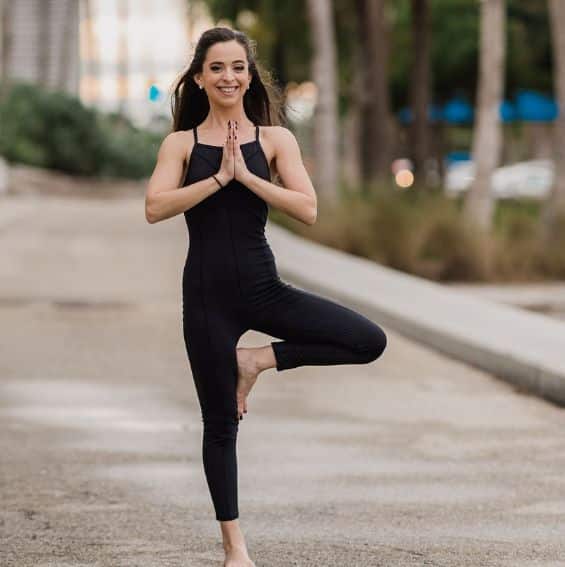
Christina's Wellness Journey: Skincare, Hatha, Yin, Buti Yoga
Anthony Mandela (AM)
Hi, Christina, thank you so much for taking the time to chat this afternoon. Let’s dive right in! I have some set questions that I sent you in advance, and I'll use those as a rough guide, but we can feel free to divert onto any interesting rabbit trails or other topics that might come up.
Many instructors, yourself included, have wide-ranging interests outside of yoga and fitness. Could we start by having you talk about some of the things you enjoy doing in your free time?
Christina Charlotte (CC)
Sure! I'm very interested in skincare, and recently obtained my esthetician license. Aside from that, some of my other hobbies are horseback riding and being outside in nature. And, travel, of course.
AM: What was it like getting your esthetician's license? What was the process?
CC: It was intense because I do work a full-time job as well. Right now, I'm doing my wellness business and yoga part-time. After I finished with work, I had school right after, in the evenings, for three months. It taught me that I was capable of handling more than I thought I could—balancing all of the different priorities. I also learned how to be so much more confident in the services that I'm providing. My hope is to eventually incorporate skin care with yoga and turn it into a full-time business.
AM: Very interesting. How do you envision bringing together these aspects?
CC: Well, I really like the basic European facial [style], with add-ons like Dermaplaning. There are a lot of trainings and resources in this area that I’m looking into right now. I’m most interested in tying in sound healing and reiki with the facials I provide.
AM: I haven't heard of that combo before!
CC: I had a facial once where the lady incorporated some sound healing at the end. Once I had that experience, I was like, wait, I want to do this and make it my unique thing.
AM: I imagine it’s a wonderful, relaxing, and rejuvenating experience all around.
CC: It is. And that's one of the aspects I love most about yoga and wellness, how you can create a relaxing, safe space for people.
"I felt like I had to go out and prove myself. I overdid it and burnt out."
AM: Do you have any skincare products that you are especially excited about or really love right now?
CC: My all-time favorite line is Eminence Organic. They use natural ingredients—everything is organic and from plants that are also edible—and their products smell amazing. There are a couple other lines, like DRMTLGY and Skin Skript, that I also like a lot. All of the products I use and recommend are natural and plant-based.
AM: Thanks, Christina. What sparked your interest in the wellness space? What started you down this path?
CC: After college, I had just graduated with a degree in hospitality resort management, I was looking for my first real job. For a while, I really struggled mentally—especially with the stress of this huge transition that nobody prepares you for when college ends—and I felt like I had to go out and prove myself. I overdid it and burnt out.
While looking for a job, and not finding much, I started taking more yoga classes to help me cope with the stress. I was having migraines frequently; it was a difficult time. But I found this studio, Joyful Yoga, where I began practicing regularly. It became the studio where I would later receive my teacher certification.
I wanted to be fully immersed in studying yoga, and I knew I wanted to teach. That was my first deep dive into the wellness space and from there it was like jumping into a rabbit hole. I completed my yoga training and then discovered there were many specialty areas and other trainings you could do, different certifications you could receive in the wellness space.
AM: The field of wellness is multifaceted, and I enjoy hearing from different people how they put the different pieces together. It's fascinating how you can blend and mix & match. I'm curious, could tell me a little bit more about your training? What was that like? What did you decide to focus on?
CC: When I first started, I didn't do much research on the type of yoga training I wanted to receive. I just knew I was in love with the studio. They were providing the training program, and, at first, I didn’t think I would do much with the training—I was interested in learning more about the history of yoga. The studio ended up providing more of a hatha-based style of training.
So that was how my training started, and I found it to be very extensive. We also learned bits and pieces about other styles as well, like yin, prenatal, and children's yoga. I appreciated how tidbits from these other styles were incorporated into my teacher training.
AM: Was your training at the 200-hour level?
CC: Yes. I completed it over a six-month period. We would attend classes every other weekend, Saturday and Sunday, during that time. And we took other workshops during that period as well. We had to complete a specific number of classes, all covering a variety of topics, and then we had to teach before our training was complete.
"I loved, and still love, teaching the gentler practices like Yin and restorative."
AM: After you received your certification, what did you do next?
CC: At the time, I was employed by a yoga studio, at the reception desk, and teaching wherever I could on the side. I started as a sub at Joyful Yoga while also working my first job out of college, which was as a “lifestyle assistant” at a nursing home. I would provide assistance and programming for all of the residents, mostly social programs. I also ended up teaching some physical movement classes, like chair yoga.
AM: At that point in your career, did you have any classes that you most enjoyed teaching?
CC: Well—I loved, and still love, teaching the gentler practices like Yin and restorative. During that time, I also had a chance to attend classes and get certified in a style of yoga called Buti Yoga.
AM: Could you explain this style of yoga in more detail for our readers? What’s it like?
CC: It’s basically the opposite of restorative yoga. A high intensity workout with fun, upbeat music. Often dance and plyometrics are involved, in combination with high intensity interval training. It’s usually an hour-long class and there are periods where you definitely get your heart rate up. I love practicing it!
AM: Was there a certificate that you had to receive in order to teach this type of class?
CC: Yes, the certification was offered at my studio, and I knew I wanted to attend the training. It was one of the most challenging weekends of my life, especially physically because it was nonstop practice for two days straight. But it also was a lot fun!
AM: Given this style of yoga was quite different from your specialty area, the classes you were most familiar with, what was the thinking behind the decision to get this new certification? Why did you decide to do it?
CC: I viewed it as challenge for myself. And I thought it would be fun, something different. I believe those kinds of trainings, the ones most outside of your comfort zone, are what keep you on your toes and help you grow as a person. The BUTI certification sparked my interest in other areas, too. Since receiving my certification, I've also gotten my Yin certificate. As I get older, I’ve became more focused on the restorative aspect of teaching.
Yoga Nidra, Meditation, Class Structure & Flow
AM: If you were to lead a workshop on any topic or theme, do have something in mind that you would choose? If so, what would you choose and why?
CC: I think I would choose Yoga Nidra. This is a guided meditation practice that I find fascinating. It goes into the whole science of the brainwaves, what your brain state is when you enter the practice, and the end goal, which is essentially deep sleep. So, you can take this practice deeper and deeper. It’s said Nidra can be the equivalent of 2+ hours of REM sleep.
AM: Wow.
CC: I think it so important, especially nowadays, because we're just not well-rested as a society. We're always so busy running somewhere.
AM: If there was just one thing that you could tell someone about a Yoga Nidra class—assume this person has no or very limited knowledge—what would you say? What do you think is the most important thing to communicate up front?
CC: I would start by explaining what yogic sleep is. Yoga Nidra can also be called yogic sleep. I’d talk more about what that is and spend some time explaining the importance of REM sleep, the overall impact that that quality sleep has on health and well being.
We need a certain amount of sleep every night, and we're not always getting it. Nidra is a nice little filler. It doesn't replace your evening hours of sleep, but if you're wanting to do something really nourishing for yourself, you can listen to a guided recording or take a workshop/class to zone out everything and refresh. As little as 30 minutes day can make a huge difference.
"When you are vulnerable, it opens the door for others to be vulnerable in return."
AM: It's not easy to get up in front of people and teach a class. Why do you do it?
CC: Well, I'm a pretty private and introverted person, so teaching is not necessarily something that comes naturally to me. But I think there's something important about expressing yourself and sharing your experiences with other people. When you are vulnerable, it opens the door for others to be vulnerable in return. People enjoy sharing what is going on in their lives and I’ve always wanted to make an impact. Once you get over the initial jitters of being in front of people, it gets easier to lead and teach classes.
AM: Often, when I chat with instructors, they tell me teaching is a two-way street—one of the reasons they enjoy teaching so much is because they love learning, and they learn so much from their students. Having the connection back and forth is super important.
CC: Yes, you truly do learn so much from your students. That's one of the reasons it is important to go into things with a beginner's mindset. You can’t have this rigid structured plan, you have to feel out what your students need. What they need today.
AM: That's a wonderful segue way into another question I have: how do you like to structure your classes? Do you follow some general principles, are there things you like to keep in mind when you put together a class?
CC: Well, of course it needs to start with the type of class I am creating. Is it more flow based? Yin? Hatha? Restorative? Then I structure my class around music and make a playlist. This sets tone for what I want to teach. I use the playlist to help me feel the class out on my own first, in my home practice.
This helps me decide what would be most beneficial for different parts or songs, as a complete practice. There's the warm-up portion, peak section, and cool down. I use that format for most of my classes, those segments will usually be Incorporated. But the music adds an extra level of creativity and gets my brain thinking about what could be changed up, added, or tweaked in the different sections of the class.
So, I have a general concept or theme mapped out in my head and then a lot becomes muscle memory, which is great because at that point I don’t need to look at notes; I can start/stop demos at any time and remember what comes next, what corresponds with the queuing.
AM: Interesting. If you were to think about a sample structure for a peak section of a flow class, what might you incorporate for that portion?
CC: There's always a goal in mind and a peak pose that depends on the focus. An example target area could be the hips. For this, one pose I especially like to build up to is dancer. It's a balance pose. It also incorporates so many different muscles in the body. You're standing on one leg and opening up your chest area while targeting different points on the body.
Dancer is an example of a peak pose, it involves a series of different balance poses as warm up to the posture.
Things Christina Loves, Feng Shui, Insight Timer, Yoga Myths, Goal Setting
AM: Here’s a fun freebie question: What’s an unusual habit you have or a quirky thing that you love?
CC: Haha. I probably have a few of these...
One quirk is around design and feng shui. I'm very meticulous about my space, perhaps even to an OCD level—I need everything orderly or else I feel like it's chaos. Lately, I've been into reading up on the feng shui elements of a room, where you should position things based on those principles.
I really love organizing as well. Organizing a closet is fun for me, although most people would probably think that's absurd. Aesthetics can make us feel better, I think.
"If you want to learn about and implement feng shui design principles, the bedroom is a great place to start."
AM: Is there a general principle of feng shui that you could talk about, something that's important to keep in mind, with regard to how you design the space around you?
CC: I feel the most important concept when you're looking at a map of your home is the bedroom, because I believe you have to get plenty of high-quality sleep in order to be a functioning, healthy person.
If you want to learn about and implement feng shui design principles, the bedroom is a great place to start. A couple easy things here: eliminate electronics from your room, keep things simple, don’t accumulate clutter. One big thing is to not store lots of stuff under the bed, which many people do.
Yes, we're often limited on storage, but according to feng shui rules, people should reconsider under-the-bed-storage since this can block the flow of energy, causing bad qui (chi – energy) in your space.
AM: What's a favorite feng shui component of your bedroom that you're proud of or thankful for?
CC: I recently got this alarm clock that uses a soft light to wake you up in morning. The light starts off dim and gradually brightens, like a sunrise. If the light doesn’t wake you up, then it plays a gentle sound (I have mine set for ocean waves) that slowly increases in volume. This is just so much better than having your phone startle you awake, immediately putting you in a bad mood, as you are jolted into the morning. And I also love my brown noise sound machine to help lull me to sleep at night.
AM: Is there a specific alarm clock that you recommend checking out?
CC: Mine is called Philip's Smart Sleep Wake up Light. I found it on Amazon, and it was relatively affordable. I think it was around $99. It's also a radio, which is pretty cool.
AM: Could you take a couple of minutes to talk about someone that you personally look to for inspiration? This could be someone in your professional life, maybe a personal mentor, teacher, or…
CC: I'm involved with a networking group called the Young Leaders Alliance, YLA, they're local here in Florida. We set up monthly events. I’m active right now on their planning committee. This organization has been instrumental for connecting me with like-minded people.
Through a program called MentorConnect, I was matched with a mentor this year. I've talked with her and we’ve met on several occasions. Even though she's doing something completely different from me professionally, the experience has been fantastic. She holds me accountable has helped give me the extra push that I needed to get out there and make things happen instead of worrying about what if.
She also shared some great advice from a book on the topic of “feeling the fear but doing the thing anyway”. She shared with me how important it is to operate your life in that way. It’s been very influential.
"I think one of the biggest falsehoods out there is that you have to be flexible to do yoga."
AM: As you interact with different people, instructors, and students, do you come across any ideas people believe about yoga that are just incorrect or inaccurate? If so, how do you debunk those myths?
CC: Well, I think one of the biggest falsehoods out there is that you have to be flexible to do yoga. I don’t know where people keep hearing this from, but it's a big misconception, and it should be disregarded. You don’t come to yoga already flexible, you come to yoga to improve your flexibility and well being. It’s a process.
AM: Agreed. You're not the first instructor to mention this, so it's a misconception that’s definitely out there. I'm sure this mentality turns plenty of people away because they think, hey, I don't have a high enough level of flexibility. I can't do those poses. There's no way I’m going to class.
CC: I don't know where the overall intimidation comes from, with people thinking they need to be very flexible. Maybe it's the pressure of having to be best at everything that society kind of pushes upon us.
But I hate that it deters people from trying a beginner class. Everybody can do yoga. 100%. There are always modifications. I’ve taught chair yoga to seniors with significant mobility issues. Even they can make it happen. There are many ways to teach and practice yoga.
CC: And it's not all about the poses either. Meditation can be your yoga practice.
Sometimes I'll just call yoga “stretches” because people get intimidated by yoga, they don't know the yogic terms. I generally don’t teach classes using Sanskrit terms for that reason—people are more likely to get confused and I try to keep everything very user friendly when I teach.
AM: I appreciate that so many of the movements in yoga are the opposite of what your body is accustomed to doing most of the day; the poses are designed to open you back up, to rebalance the body. The way we spend so much our day is unnatural.
CC: That is one of the hardest things about working a desk job. Especially if you are sitting for 8 hours a day. We're not designed as humans do that.
"Learn your alignment first so that you can go into poses safely."
AM: Yoga is a reset for the body and, I think, a tool to achieve and retain balance. That's another thing I like to share with people, too—yoga can be as good as or better than a chiropractic adjustment for the whole body.
AM: How about a piece of advice you’ve heard that you think is poor advice? It doesn’t necessarily have to be related to yoga. Something you’d say to others…if you hear this floating around out there, stop and reconsider.
CC: I would say—don't let anyone talk you into beginning your yoga journey with a power-yoga class! Take the time to know your alignment through the basic poses, and get to know modifications, first. The goal is to go into poses safely, and avoid injury. These poses should feel good. Basic-level classes help students to learn proper alignment, as a healthy foundation to build up to a "Power" flow type of class. Everyone's anatomy is different, so yoga is truly never a one-size fits all kind of practice.
AM: Since your background is in hatha and is alignment focused, can you talk some about how you make all levels of yogis and new students feel welcome in your classes?
CC: In my group classes, I offer as many modifications for different poses as I can. This is so important. The other critical piece I always tell students is to listen to their body. If something does not feel right, come out of the pose. Don’t force it. I try make sure everybody feels like they have their own authority to make the decisions that are right for them.
"Be curious. Without curiosity, you can't really meet someone where they are. Have acceptance for where your students are at in their practice."
AM: Now that you've been doing this for a while, what do you think are some of your unique skills that have helped you be successful in this field?
CC: Well, the main thing is to approach everything like I'm beginner, to be curious. Without curiosity, you can't really meet someone where they are. Having that acceptance for where your students are at in their practice. Also, tapping into other resources.
Trainings are especially helpful because I can connect with a network of people and meet like-minded instructors. This has opened many doors for me as far teaching goes, being open to all opportunities instead closing myself off into a box.
AM: If you are working with a group of intermediate students who are looking to advance their practice, is there any guidance you would give? Of course, everyone's practice is different, but if you could generalize a bit, is there something you think is especially helpful to keep in mind?
CC: I believe people should first write down their goals, so that they're on paper. That's been huge for me when it comes to actually completing goals. Write them down and then schedule them into your daily activities. With regard to advancing in your practice, a lot of it comes down to having a home practice. Practice by yourself, not just in the studio. This is how you’ll be able to explore and understand what your body is able to do and how you can push yourself.
When you're rolling out your mat, you’re in your own space. Set aside 30 minutes or so a day to work on your goals, or just practice and see what feels good for your body. What are your limitations? If you don't know your boundaries and how something feels, you’re not going be able to progress and you’ll just wind up frustrated. Body awareness and connecting with yourself is crucial.
Upcoming Projects & Retreats, Book & Author Recommendations, Tapping, Journaling
AM: Moving on to the project side of life for a moment—is there anything you've got going right now that you're especially excited about?
CC: On the topic of skin care again, now that I'm certified as an esthetician, I would like to start offering a variety of services to clients. It’s been a challenge to get this started and I’m now working with a mentor in this sector.
We're going to meet again in August, when I can gather my energy back and focus on one thing. I’m extremely excited to provide skincare services, and I’m going to pitch my mentor on the idea of incorporating skincare with other holistic modalities. I’d like this to eventually become a full-time thing for me; it’s a big project.
AM: What do you enjoy most about running your own business? And/or please feel free to talk about some of the challenges as well.
CC: Well, a big challenge would be supporting myself financially. As we all know, it's very expensive to live right now, so it's a transition from knowing what my income will be each month to having the variable income flow that comes when you are building something from the ground up. It's a risk that I haven’t fully been able to take yet.
"It is my purpose. I want to provide these services to people, and I find the most meaning in helping people in this area."
AM: What's driving you to consider taking this “risky” path? What is the motivation?
CC: I've asked myself that question a lot.
You know, why does this keep nudging at me? I really think it's because it is my purpose. I want to provide these services to people, and I find the most meaning in helping people in this area. So, I need to find the confidence to fully step out and take the risk. You don't get reward without the risk.
I'm trying to convince myself of that. I think once have more of a concrete plan fleshed out, a road map, I’ll feel better about taking the leap, so that is what I’m working towards right now.
AM: Thank you for sharing that, Christina. Is there anything in your industry, perhaps a physical or digital product, that you absolutely love and couldn’t live without?
CC: An app called Insight Timer. It’s a free app that’s great for meditation. They have so many guided meditations, and I like to track my meditation practices with the timer. It makes a sound to bring you back, and it records how long you've meditated for. If you're into setting goals for meditation for yourself, you can see minutes you’ve completed for the week. It helps keep you accountable.
AM: Are the guided meditations always the same? What are the options you can choose from?
CC: They have a full library of guided meditations that you can search for and complete. They range from all different kinds of practices. There are yoga nidras on the platform, which is how I found out about it, and also sound healing. There’s also straight music options, too, if you're just wanting some background noise during your practice.
"The most important agreement is the agreement we have with ourselves. What we tell ourselves.”
AM: Thanks so much for sharing that resource! Are there any books that you have frequently gifted and/or other resources that you would recommend for people to check out?
CC: One book I have gifted quite a few times is the Untethered Soul by Michael Singer. Another one of my personal favorites is the Four Agreements by Don Miguel Ruiz.
AM: What is something you really enjoyed about one or both of those books? Perhaps an idea or theme that really stuck out to you?
CC: I found The Four Agreements to be very relatable, it's kind of like a psychology book. There were just four basic concepts that were easy to understand and apply. It made me reflect on how we so often hold to the patterns of thinking described in the book and that we can make a conscious choice not to think in certain ways that have a negative effect on our lives and health. The book talks about how we live our lives, often subconsciously, according to agreements—or rules, or patterns—that we have with different people. But the most important agreement is the agreement we have with ourselves. What we tell ourselves. The book brought to the surface a different way of thinking.
CC: Another great author is Gabby Bernstein. I've read most of her books and she has such a positive impact on people. She also provides affirmations that you can do on a daily basis. And she describes a unique “tapping” practice to combat anxiety, I don’t know if you are familiar with it?
AM: T-A-P-P-I-N-G? I’ve heard a little bit about the approach, but could you explain further?
CC: It’s a psychological acupressure technique, also known as EFT, and I learned about it from one of her books, and she has a YouTube tutorial on it as well. Basically, there are these acupressure points in the body, you tap on them with a certain rhythm and recirculate energy throughout your body to reset.
AM: Interesting.
CC: Yeah, I've used it to help me get through some anxious periods and I’ve found it really does lower my anxiety baseline.
AM: How about one of the best or most worthwhile investments you have ever made? I'm using the term investment in a very loose, non-specific way. Could be an investment of money, time, energy, or something else.
CC: I was initially very reluctant to have somebody design a website for me. For some reason, I thought I could just do it all on my own, but the project wasn’t really going anywhere. I kept procrastinating.
Then, I finally made the decision to have someone build out a site for me, and I’m so glad I made this decision. They put everything together so quickly and beautifully. We had a chance to do a photo shoot as well and design a logo.
At the time I was thinking, wow, this is a lot of money. I don't really have my business fully established yet. But going through the process helped give me confidence to share what I'm trying to present to others. And it’s already opened a lot of new opportunities for me.
"I'm a big believer in rewriting. And meditation before that happens, to center the brain.”
AM: How about a belief, behavior, or habit—could be something that you've recently discovered, or not—that has significantly improved your life?
CC: Well, aside from writing down goals and journaling, I'm a big believer in free writing. And meditation before that happens, to center the brain. Also, prayer, spirituality, and reflection is something that is important to me and I've always tried to find time at the end of each day for this.
AM: When you talk about journaling, is there anything specific that you try keep in mind? Do you just want to make sure you put pen to paper each day, or do you have something more structured?
CC: Sadly, I'm not able to journal every day, but I find that when have a slower morning—when I’m not immediately rushing to work—I love to meditate and then free write. Pen to paper. I try to get at least one to two pages when I do this.
AM: We sure have covered a lot of ground, and I want to thank you again for your insightful responses. I enjoyed learning more about you and what you've got going on in world! As we wrap up, did I forget to ask you something? Anything else you think would be helpful to share?
CC: I think that we pretty much got to everything. I appreciate the opportunity to talk about what I am doing, because I don’t get to do it all that much. Thank you!
AM: For those who would like to learn more about Christina, check out her website here: https://www.evergreenholistics.com/ and Instagram here: https://www.instagram.com/evergreen_holistic.
Christina is also collaborating with Molly Curls and Retreat Conexions to co-host a wellness, yoga, and movement Lead with the Heart retreat at the Bodhi Tree resort in Costa Rica June 29-July 03 2023.
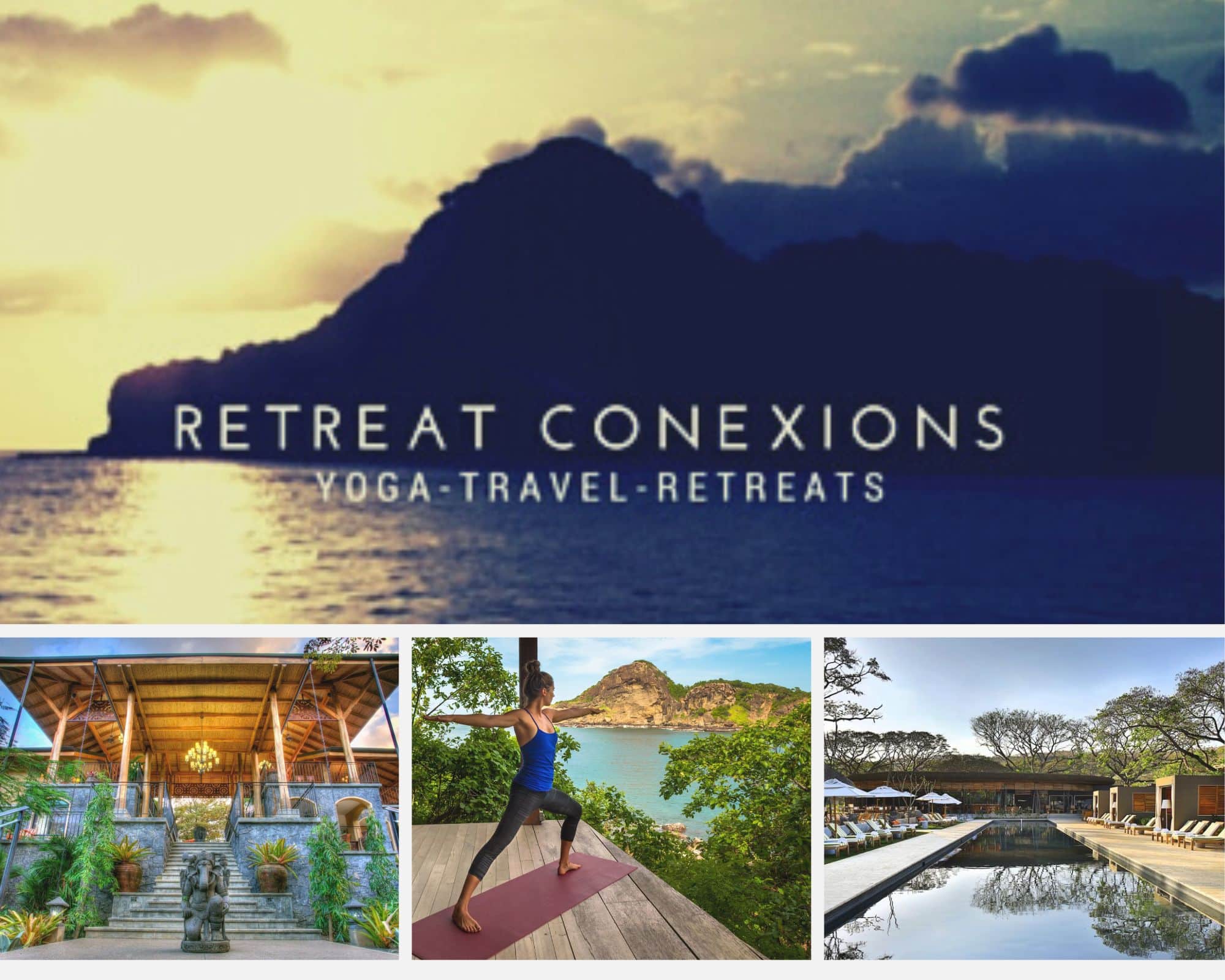
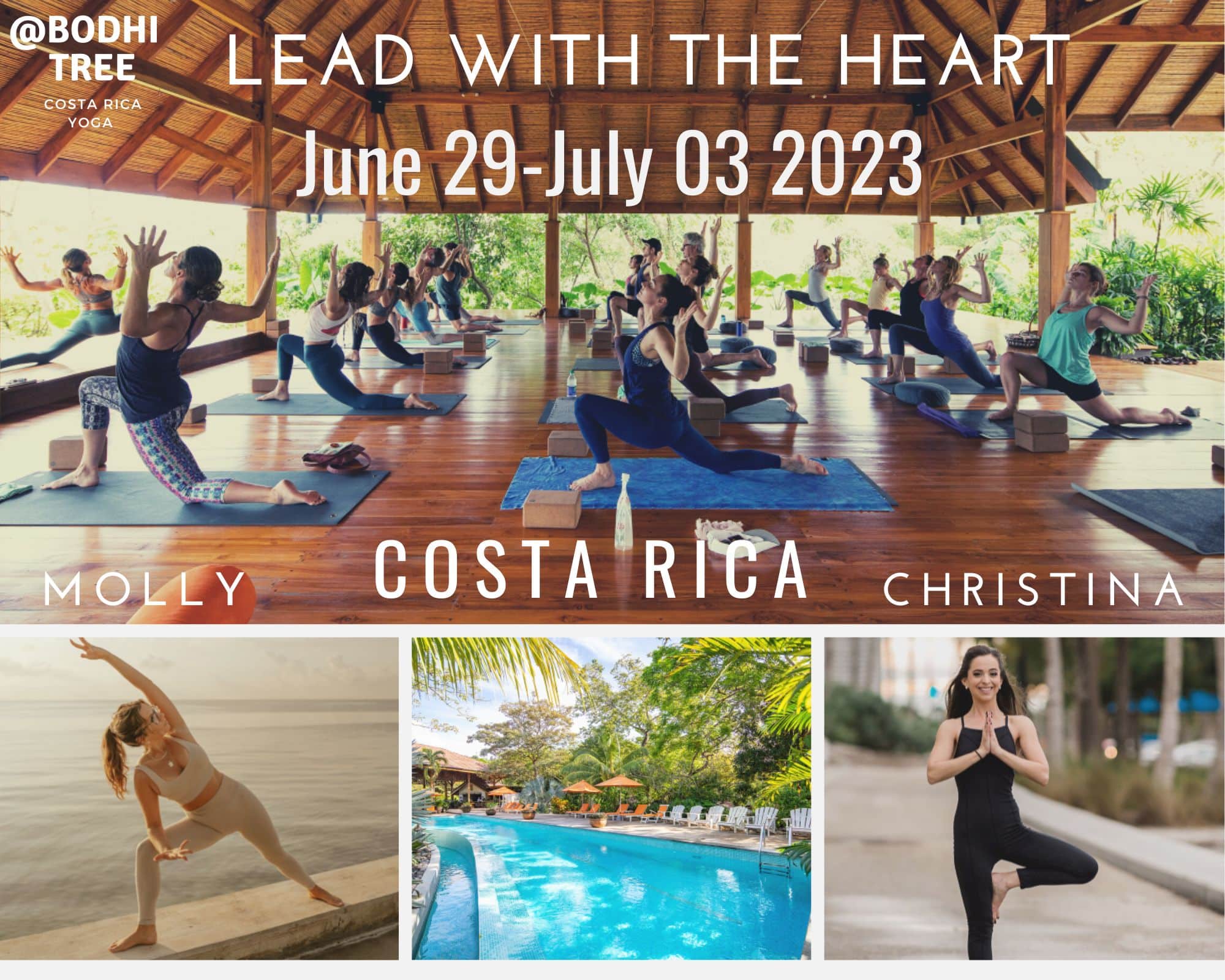
Reader Note: Thanks for taking your valuable time to read this long-form interview. I hope these stories help you discover inspiration and advice that improves your life in a meaningful way.
Interested in receiving a periodic newsletter with curated, quality content (edited, long-form interviews) from successful fitness professionals around the world? If so, I’d love it if you would sign up here.
Are you a professional in the fitness industry with over five years teaching experience? Would you like to learn more how my retreat leader matching and logistics services can help propel your business to the next level? If so, please take 5 minutes to tell me more about your goals, experience, and areas of expertise here.



